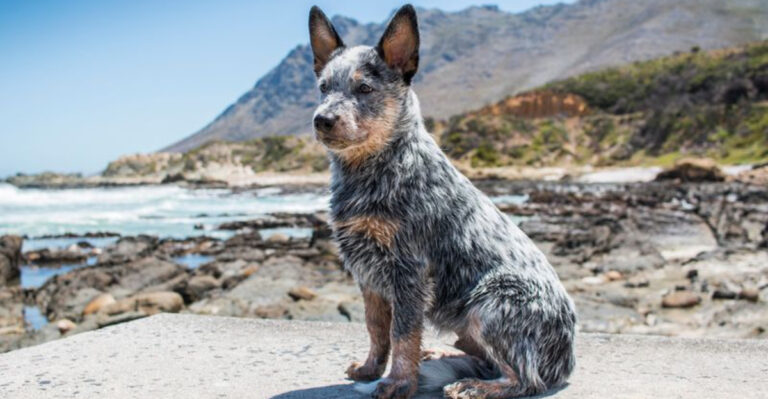12 Smart Things To Do If You Run Into A Bobcat In The Wilderness
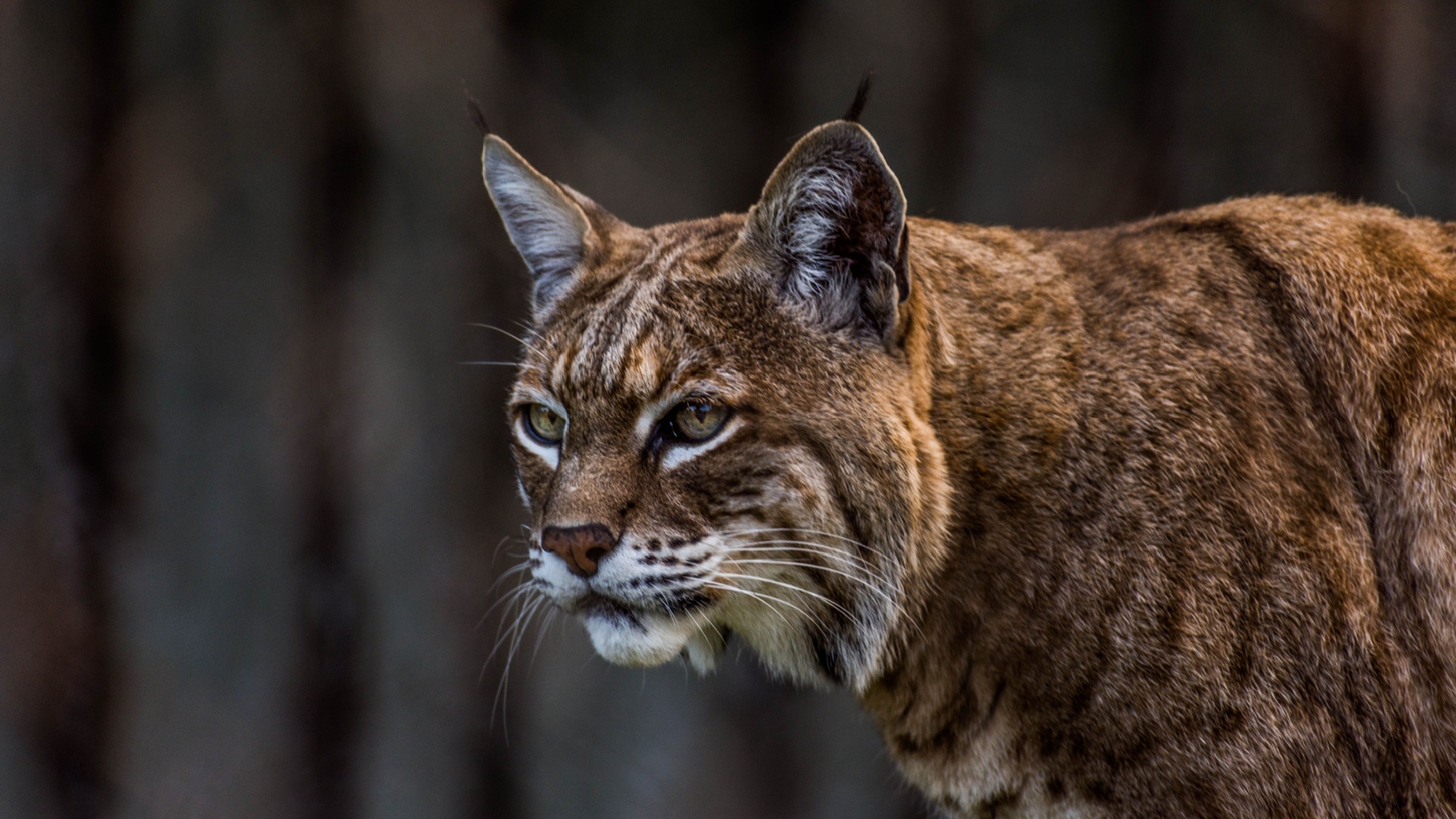
Exploring the wilderness often brings unexpected encounters, and stumbling upon a bobcat can be both thrilling and nerve-wracking. These majestic creatures, known for their elusive nature, are more common in certain regions than one might think.
Preparing yourself with the right knowledge can ensure that you handle such situations with confidence and ease.
With that in mind, here are some smart and witty tips to remember if you ever find yourself face-to-face with a bobcat on your adventures.
1. Stay Calm And Composed
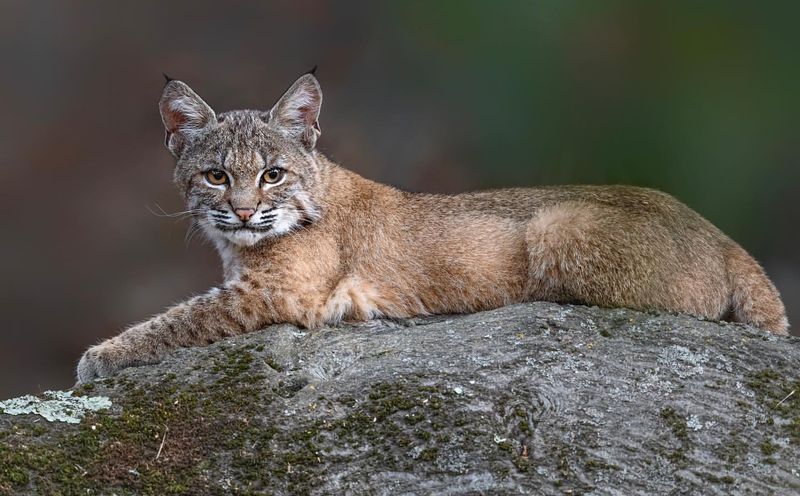
Finding yourself face-to-face with a bobcat might send your heart racing, but staying calm is key. Panicking can escalate the situation unnecessarily, leading to unwanted consequences. Remember, bobcats usually keep to themselves and avoid human interaction. By exuding calmness, you are less likely to provoke a defensive response from the animal.
When you’re calm, you can better assess the situation and decide your next steps. If the bobcat hasn’t noticed you, slowly and quietly back away, maintaining a respectful distance. This ensures that you don’t come across as a threat. Maintaining composure not only helps in dealing with the bobcat but also keeps your mind clear to recall important details about the encounter.
Consider it a test of your wilderness nerves, a chance to show you’ve got what it takes to handle nature’s surprises with grace.
2. Make Yourself Appear Larger
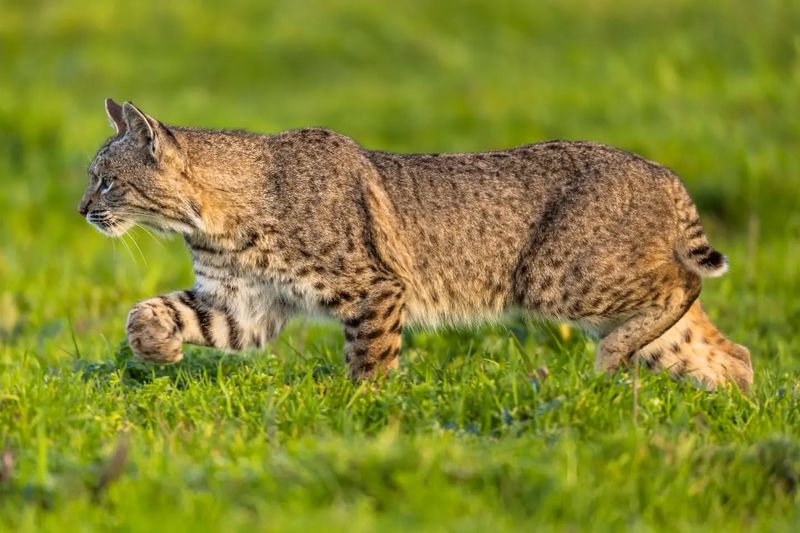
In the animal kingdom, size often matters more than you think. If a bobcat appears curious or slightly aggressive, making yourself look larger can be an effective deterrent. Spread your arms wide and stand tall, creating an illusion of dominance.
The goal is not to challenge but to communicate that you are not easy prey. This method taps into the bobcat’s natural instincts, making it reconsider its interest in you. While doing this, maintain eye contact, but avoid staring aggressively, as this could be perceived as a threat.
A dash of creativity here can help too. Use your jacket, backpack, or any gear to enhance your size. Just remember, while this tactic works wonders, it’s best not to overdo it and turn the encounter into a comedic spectacle.
3. Do Not Run Away
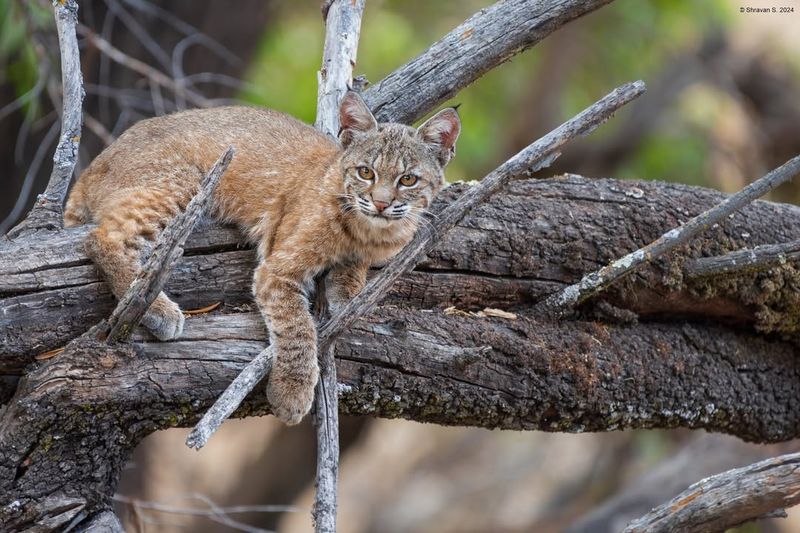
When instincts scream “run,” resist. Running can trigger an unwanted chase response in bobcats, making everything more complicated. Despite their small size compared to other wild cats, bobcats are swift and agile, perfectly capable of catching up with a human. By choosing to stand your ground, you communicate that you’re not prey.
This action can be a powerful message in the wild, often defusing a potentially tense situation. The key here is to exude confidence without being confrontational. Stay rooted to the spot, and use your voice assertively if needed. A firm “no” or “go away” can be surprisingly effective, as bobcats aren’t accustomed to noisy human interactions.
Remember, in the wild, it’s all about playing it cool, like you’re just another part of the scenery.
4. Back Away Slowly
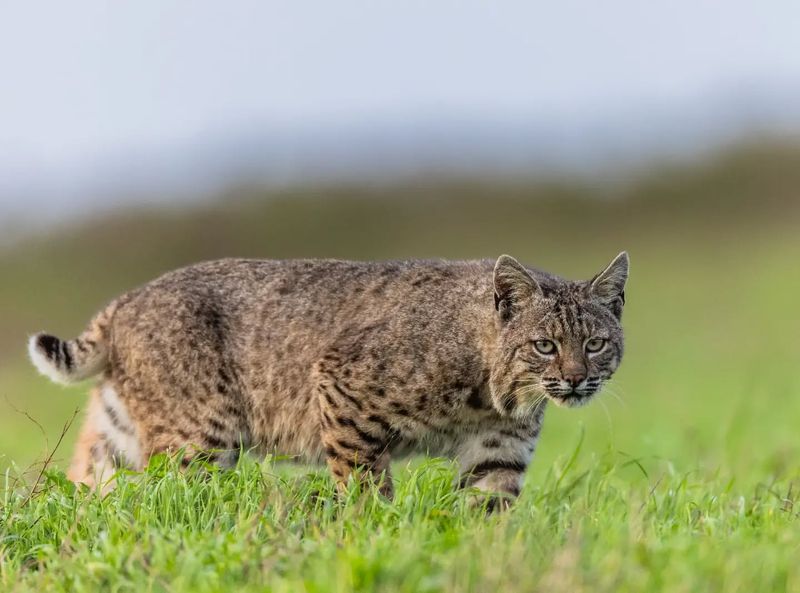
When the wild and wily bobcat decides to make an appearance, your best move is often a slow retreat. Rather than turning and bolting, which can incite curiosity or predatory instincts, taking measured steps backward keeps things calm.
By backing away, you maintain eye contact, ensuring the bobcat recognizes you as a living, breathing obstacle rather than prey. This action, surprisingly simple, often communicates respect and non-aggression – two things bobcats appreciate in their human encounters. As you retreat, be mindful of your surroundings. Watch your step, avoid tripping, and keep your focus on the bobcat.
This careful choreography is more than just a dance of avoidance; it’s a display of wilderness etiquette that ensures both you and the bobcat part ways safely and with a newfound respect.
5. Use Your Voice
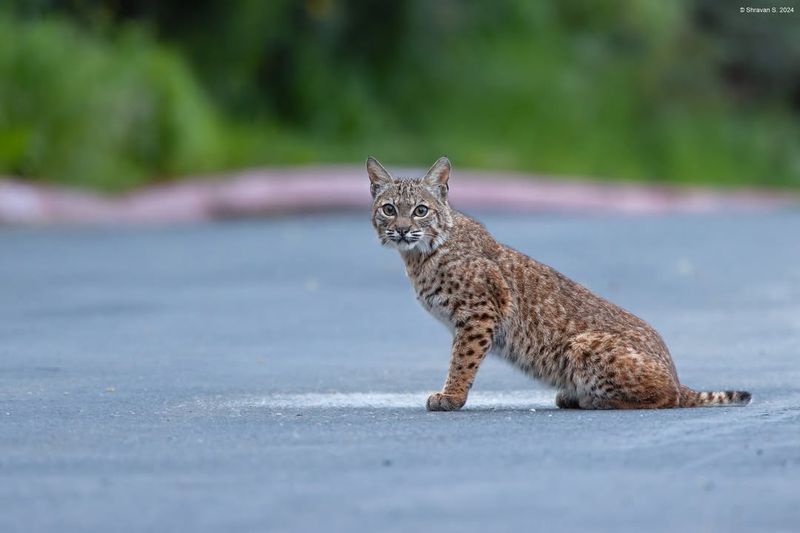
Words have power, especially when facing a bobcat in the wild. Using your voice assertively can deter a bobcat and signal that you’re not an easy target. Start with a firm yet calm tone, conveying authority without aggression.
While shouting might seem instinctive, it’s not always necessary. A loud, clear voice does the trick. Tell the bobcat to go away, using simple commands. This unexpected human behavior often startles them, making them reconsider their interest.
Remember, the goal isn’t to scare but to communicate clearly. Just as you would with a stubborn pet, assertiveness coupled with calmness reassures the bobcat of your confidence, turning a potentially tense situation into a simple wilderness chat.
6. Keep Small Children Close
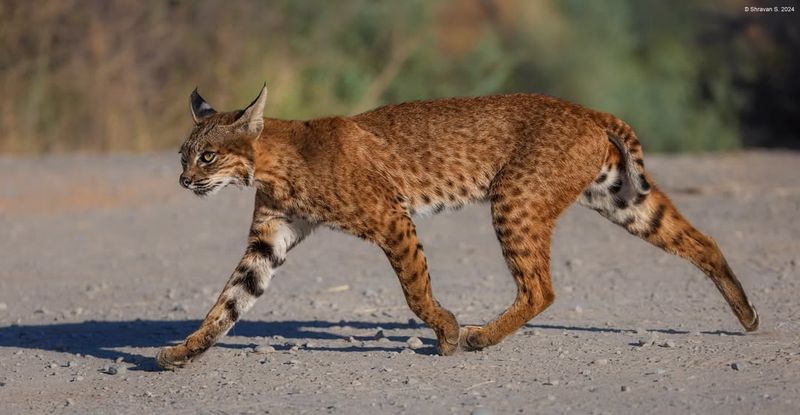
Encountering a bobcat is one thing, but doing so with small children adds an extra layer of caution. Bobcats, though typically shy, might become curious about small, fast-moving humans. Keeping children close and calm is crucial. Hold their hand or pick them up, reassuring them as you observe the bobcat.
This proximity to adults signals to the bobcat that the smaller humans are not separate targets. Children’s unpredictable movements can be minimized, reducing the chance of drawing unwanted attention. This strategy also ensures the safety of your little ones, keeping them out of harm’s way.
It turns a potential wilderness scare into an educational moment, teaching kids the importance of calmness and awareness in nature.
7. Keep Pets Leashed
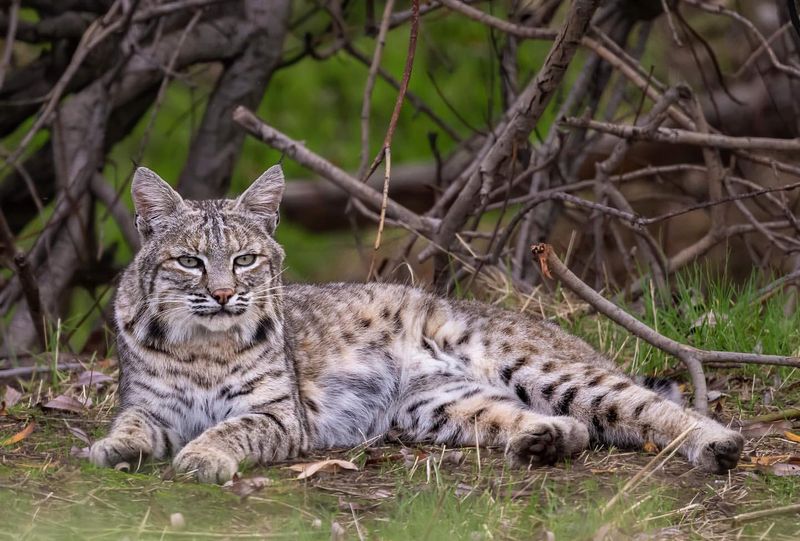
Ah, the joys of a wilderness walk with your furry friend! However, encountering a bobcat can be a game-changer. Ensuring your pets are leashed is essential to prevent unexpected chaos. Dogs might see bobcats as a source of excitement, but their curiosity can lead to unnecessary confrontations.
A leash keeps things under control, allowing you to maintain authority over the situation. It also sends a clear message to the bobcat: this furry companion has a human protector. For cats on a walk, their natural curiosity might lead them to approach bobcats.
Keeping them leashed ensures they stay safe and out of potential danger. This simple step not only safeguards your pet but also promotes harmony in your nature adventures.
8. Avoid Direct Eye Contact
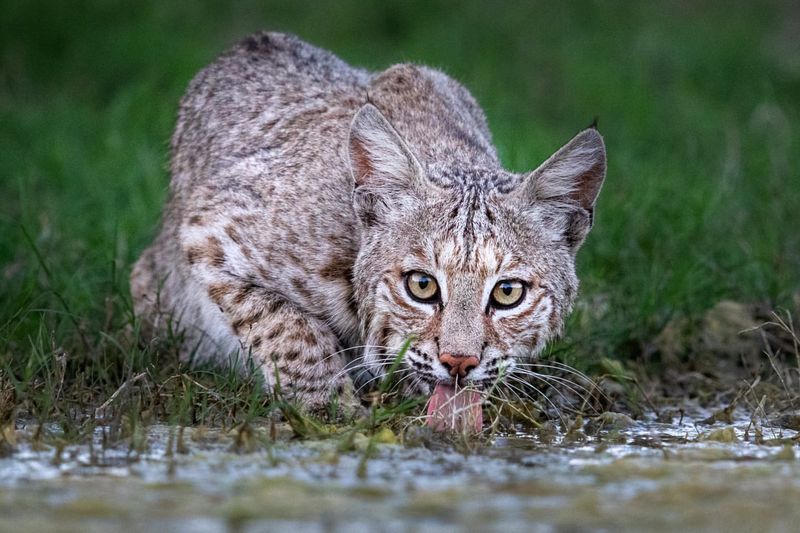
It might seem counterintuitive, but avoiding direct eye contact can make a difference when meeting a bobcat. Staring can be perceived as a threat, inadvertently escalating the situation. Instead, try to keep the bobcat in your peripheral vision while remaining aware of its movements.
This strategy is akin to a respectful nod in the animal world, showing you’re aware but not confrontational. By sidestepping the stare-down, you minimize the chance of triggering defensive behavior.
It’s a subtle, yet effective way to communicate peaceful intentions, ensuring your bobcat encounter remains as uneventful as a nature documentary.
9. Make Some Noise
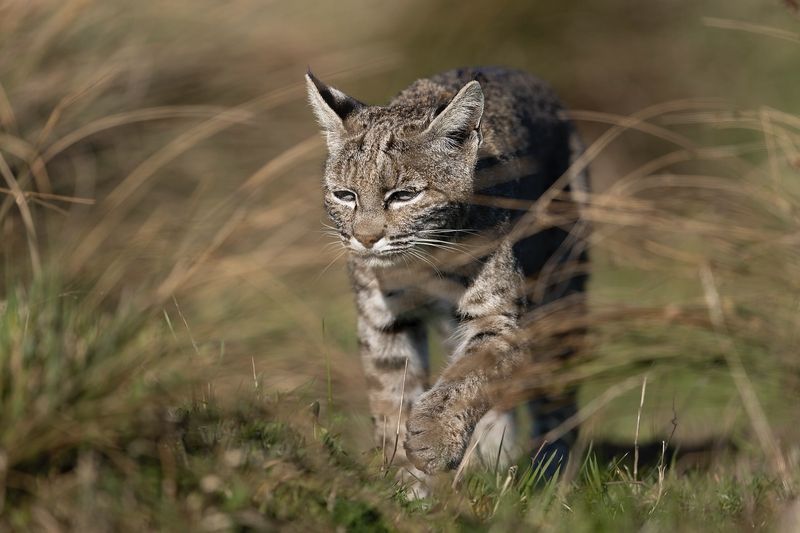
Silence may be golden, but noise can be your ally during a bobcat encounter. Making some noise, like clapping or speaking loudly, can signal your presence and dissuade the bobcat from sticking around.
This approach helps break the stealthy atmosphere bobcats thrive in, making them realize that their secretive cover is blown. A bobcat’s natural instinct is to avoid human interaction, and a little noise can remind them of that. Keep it light-hearted; you don’t need to create a racket.
Just enough sound to show that you’re there and not interested in playing a real-life game of cat and mouse.
10. Respect Their Territory
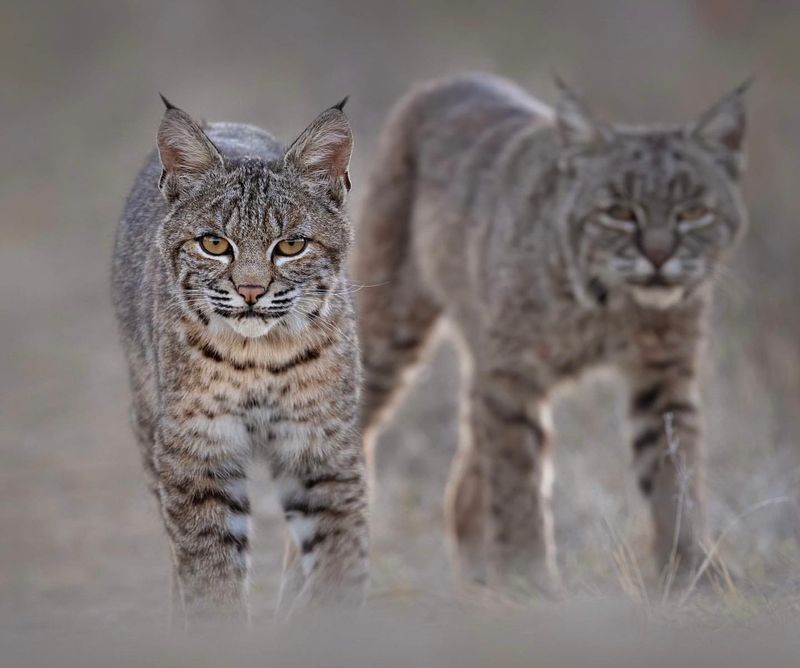
Wandering into a bobcat’s domain requires a touch of etiquette. Respecting their territory is paramount, much like you would with any majestic landlord of the wilderness. This means keeping a respectful distance and avoiding any actions that could be perceived as a challenge.
Understanding that you’re a visitor in their home sets the tone for a peaceful encounter. If a bobcat seems perturbed, it might be you’re too close to its den or young, which would make anyone defensive. By acknowledging their space, you not only ensure your safety but also show the bobcat that you’re a considerate guest in their natural habitat.
With this mutual respect, both you and the bobcat can continue your paths without crossing each other’s boundaries.
11. Observe And Appreciate From Afar
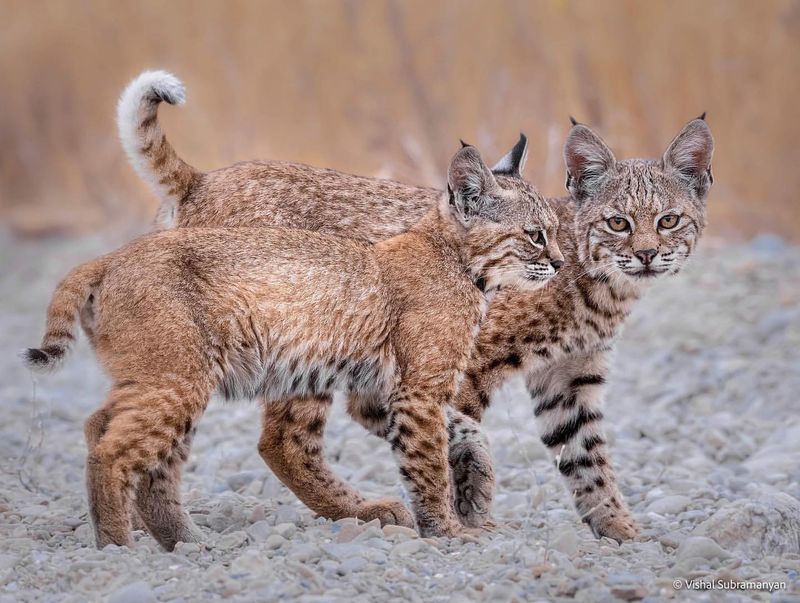
Sometimes, the best approach is to simply observe and appreciate. Watching a bobcat from a safe distance offers a glimpse into their world without intruding. This passive approach keeps the interaction peaceful and respectful.
Using tools like binoculars allows for a detailed view without encroaching on their space. It’s a chance to learn, capturing moments that few get to experience firsthand in the wild. By resisting the urge to get closer, you promote a harmonious coexistence with nature.
It’s a win-win; you soak in the beauty of the wilderness, and the bobcat continues its day unbothered.
12. Report The Sighting
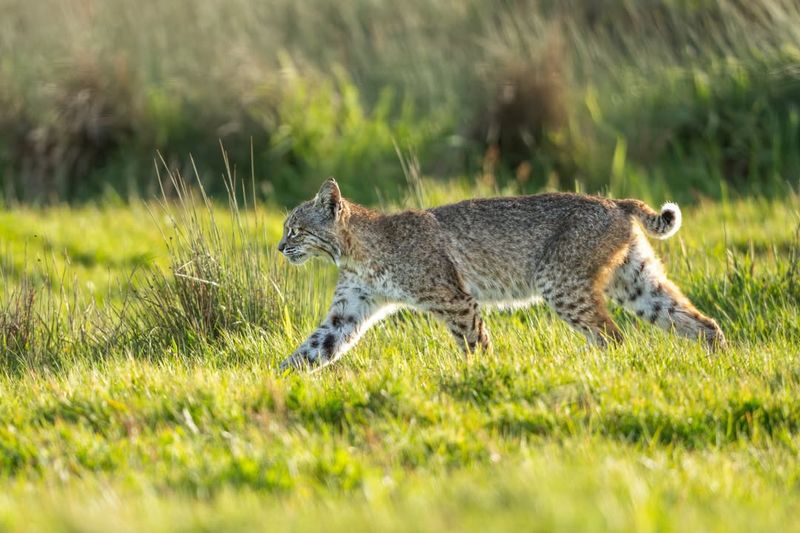
After the encounter, consider reporting your bobcat sighting to local wildlife authorities. This not only helps in tracking animal movements but also aids conservation efforts. Sharing details like location and behavior can provide valuable data to researchers.
It supports efforts to maintain the balance between human activities and wildlife habitats. Plus, you get to contribute to science, adding a touch of purpose to your adventure. This responsible action ensures that future adventurers are informed and that bobcats remain a thriving part of the ecosystem.
Reporting sightings turns a simple encounter into a meaningful contribution to understanding and preserving wildlife.





